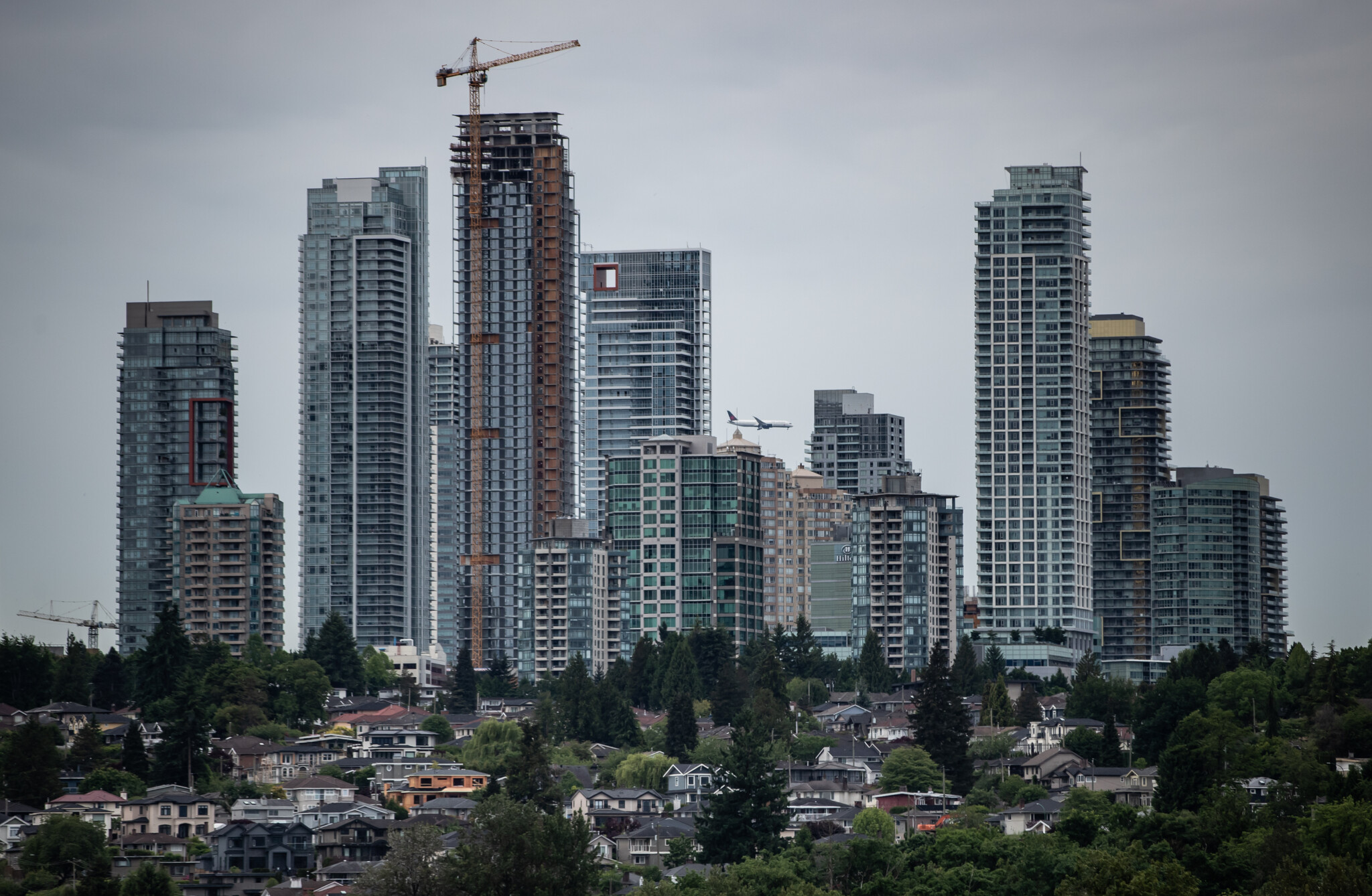The Liberals’ plan of achieving housing affordability by increasing housing supply and lowering up-front costs is going to be an uphill battle. After peaking in 2021, investment in residential housing construction has been below pre-pandemic levels for years, when adjusted for inflation.
The slowdown is a result of the rise in construction costs, particularly financing costs. A 2024 survey of real estate developers revealed that 94 percent of North American builders see the cost of capital as a key issue causing concern.
The uncertainty on future costs brought on by Donald Trump’s global trade war has also presented a new threat to new investment in Canada’s housing market.
Similarly, new housing starts also fell after peaking in 2021, when interest rates were near-zero, and the Canadian Mortgage and Housing Corporation (CMHC) expects the trend to continue for the next few years. Though housing starts are projected to remain above their 10-year average, they will be well below what we need to fix the structural housing deficit of about 3.5 million homes by 2030. In fact, CMHC’s latest report estimates that a return to housing affordability levels last seen in 2019 will require between 430,000-480,000 new housing units to be built annually over the next decade. Reaching that number would require an approximate doubling of the current pace of housing construction in Canada.
Since the 2021 peak, the slowdown in investment has been concentrated in investments for single-family homes in Ontario and B.C., where these types of homes have risen in value, and many young families have had to leave the province to find more space at an affordable price.
Moreover, the falling investment for multi-unit housing projects can be crushing for developers, even though these types of projects have the biggest impact in addressing the structural housing deficit. As the condo market drops in places like Toronto and Vancouver, investors have been seeing the rate of return on their assets drop, and, in some cases, they are taking losses.
In fact, the nature of condo financing in Canada, in combination with restrictive land-use and zoning regulations that add costs and hinder building more units, has created distortions in the market and left it unable to fill the gap in housing supply. For example, banks and other lenders generally don’t advance any money to condo developers for construction until developers have pre-sold about 70 percent of the units in any new multi-unit building. So, developers have grown to rely more and more on investor money.
Although the data shows that the largest groups of residential real estate investors in Ontario and British Columbia are people who live in the province, typical investors own a large share of the condo market in both Toronto and Vancouver. Statistics Canada found that in 2020, investors owned 39 percent of all condo apartments in Toronto and 34 percent in Vancouver.
The financing from investors has encouraged developers to build smaller condo units as they cost less and are still able to provide a rental income that covers mortgage costs, but do not provide enough space for young families who are moving out of the city. Statistics Canada finds that since 2016, about 38 percent of condos built in Toronto are less than 600 square feet in size, compared with only 7.7 percent before.
As the housing market cools, Canada will have to keep building and further ease demand, but that may not be enough. Tighter interest rate policy, increased recession risk, and elevated economic uncertainty have spooked buyers. If financial conditions continue to ease, there will eventually be a release of pent-up demand. With vacancies below healthy levels in the country’s largest metro regions, the surge of demand will lead to bidding wars that push prices up across the board, similar to when prices started spiking during COVID.
And because housing is one of the most rate-sensitive sectors of the economy, and one whose costs contribute the most to the broader price level, rising prices will put pressure on the central bank to raise rates and tighten financial conditions again, which will further hinder investment.
The best time to massively expand the supply of housing in Canada was during the 2021 peak when interest rates were at near-zero. With interest rate policy out of Prime Minister Mark Carney’s hands, he will have to find a way to massively expand investment in new housing construction. Thankfully, Carney has quite a few things he can do.
Namely, he can remove some of the impediments to residential housing investment that are already in place. For example, as Mike Moffatt points out, the ban on foreign investors in residential property is a problem when they are buying resale homes or buying condos and raising rents for tenants. However, redirecting that investment to new housing construction rather than banning it outright could be a new financial resource to developers without creating more demand for existing homes.
A more ambitious plan would be to create a national housing construction fund. In a policy paper for the Center of Public Enterprise, co-authors Paul Williams and Yakov Feygin argue that governments facing significant housing supply deficits should create a fund available to private and non-profit developers to access funding and acquire the capital to get shovels into the ground.
The idea is not just based on easing the burden of today’s higher rates on housing production, instead it is about creating an economic environment where housing construction does not dip in times of trouble and achieves a degree of insulation from the business cycle at large, so that the pipeline of new housing is smooth, stable, and high over time.
The Liberals have already implemented policies to subsidize construction, like the Apartment Construction Loan Program and the Affordable Housing Fund, but they have not provided relief to developers facing rising costs. If our government’s approach to housing affordability is to boost supply and lower costs, it will have to expand its support to homebuilding and the financing it requires.









